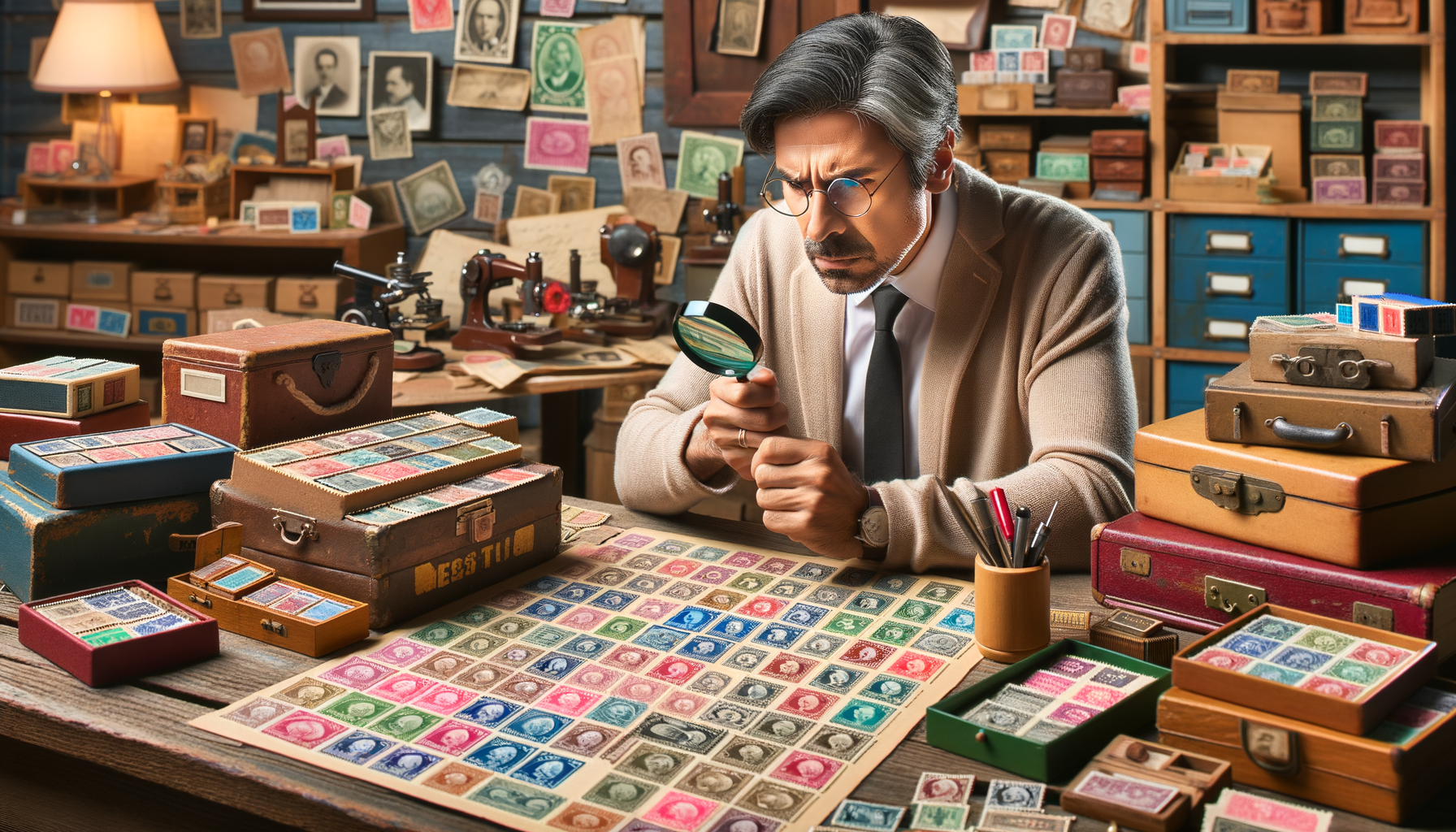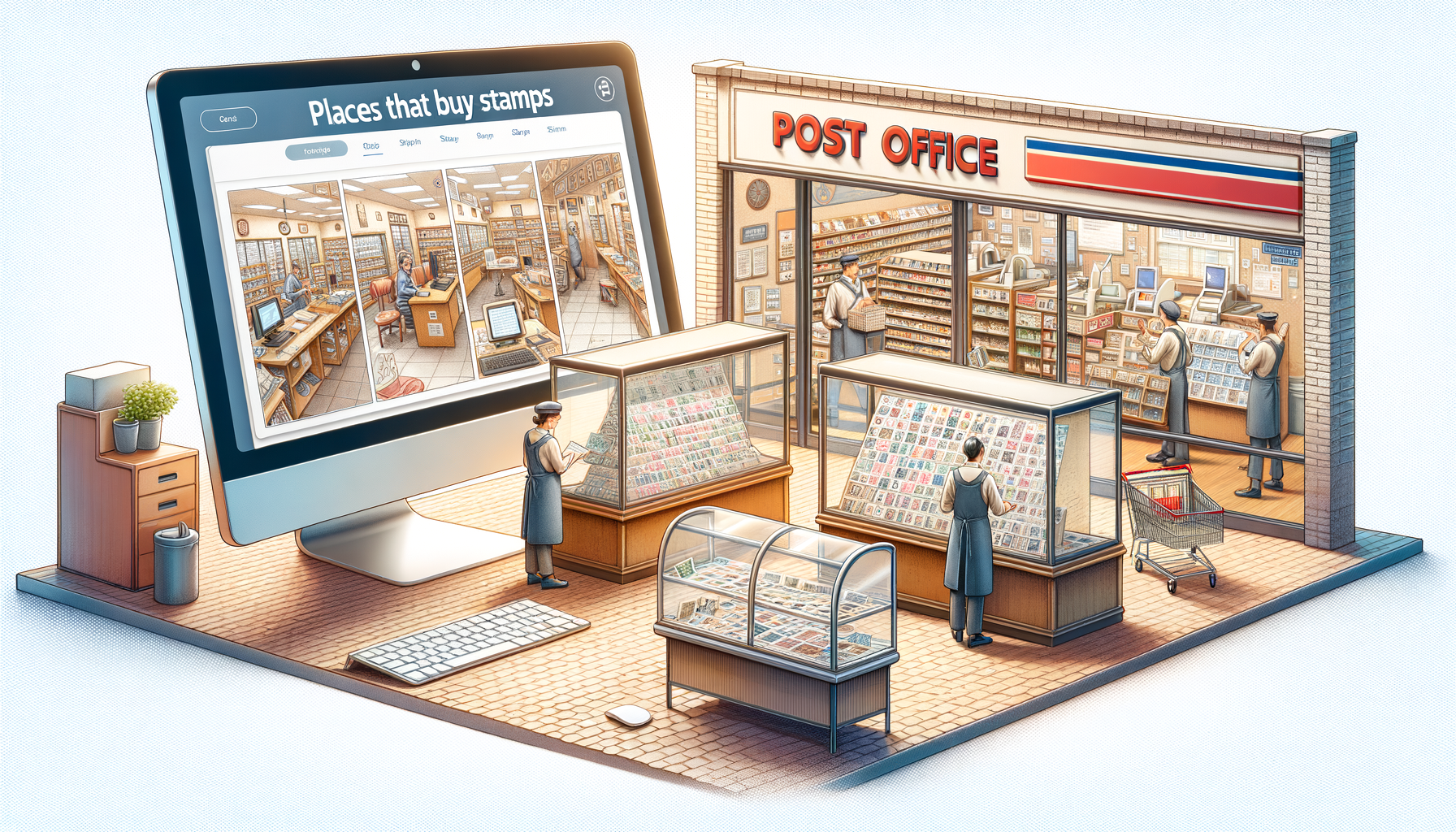Finding stamp buyers near you can be challenging since the hobby of stamp collecting has been in a major decline over recent years. It signifies the importance of local transactions in the stamp market. Many individuals and businesses prefer local buyers for several reasons. Selling stamps locally can offer convenience and immediate payment. It also allows sellers to avoid the complexities of online transactions.
Benefits of Selling Locally

Local stamp buyers provide a personal touch that online platforms cannot match. Sellers can engage directly with buyers, fostering trust and transparency. This direct interaction often leads to better negotiations and understanding of the collection’s value. Additionally, local transactions eliminate shipping risks. Stamps are delicate and can be damaged during transit. Selling locally ensures the collection remains intact and secure.
Another advantage is the potential for building long-term relationships. Regular interactions with local buyers can lead to future opportunities. Sellers might receive insights into market trends and demands. This relationship can be mutually beneficial, enhancing both parties’ knowledge and collections.
Misconceptions About Local Stamp Buyers
There are several misconceptions about local stamp buyers. One common belief is that they offer lower prices than online platforms. However, many local buyers are knowledgeable and fair. They often provide competitive prices based on current market conditions.
Another misconception is that local buyers have limited expertise. In reality, many are seasoned collectors or dealers with extensive knowledge. They can accurately assess the value of a collection. Their expertise often surpasses that of online buyers who rely solely on digital images.
Reasons for Seeking Local Buyers
Collectors and sellers seek local buyers for various reasons. One primary reason is the desire for immediate cash. Local buyers can offer quick transactions without waiting for online auctions to end. This immediacy is crucial for those needing funds urgently.
Another reason is the assurance of authenticity. Local buyers can physically inspect the stamps, ensuring their genuineness. This inspection reduces the risk of counterfeit transactions. Sellers gain confidence knowing their collection is in capable hands.
Local buyers also provide a sense of community. Engaging with local enthusiasts fosters a shared passion for philately. This community aspect can be rewarding, offering both social and educational benefits. Sellers can learn from experienced buyers and expand their knowledge.
Challenges in Finding Local Buyers
Despite the benefits, finding a reliable stamp buyer near me can be challenging. The market is niche, and not every area has established buyers. Sellers must conduct thorough research to identify reputable buyers.
Networking within local philatelic clubs can be beneficial. These clubs often have connections to trusted buyers. Attending local stamp shows and exhibitions can also provide opportunities. Sellers can meet potential buyers and gauge their credibility.
Online resources can aid in this search. Many websites and forums list local buyers and dealers. Reviews and testimonials can offer insights into their reliability. However, sellers should remain cautious and verify information independently.
Overall, understanding the need for local stamp buyers is crucial. It involves recognizing the benefits, addressing misconceptions, and navigating challenges. By doing so, sellers can make informed decisions and maximize their collections’ value.
Identifying Reputable Stamp Buyers in Your Area
Finding a trustworthy stamp buyer requires careful research and consideration. The process involves evaluating potential buyers’ credibility and expertise. This ensures a fair and satisfactory transaction for both parties involved.

Researching Potential Buyers
Begin by conducting thorough research on local stamp buyers. Utilize online resources, such as forums and directories, to gather information. These platforms often provide reviews and ratings from previous sellers. Such feedback can offer valuable insights into a buyer’s reputation.
Networking within local philatelic communities can also be beneficial. Members of these communities often have firsthand experience with local buyers. They can recommend reliable dealers and provide guidance on whom to approach.
Visiting local stamp shows and exhibitions is another effective strategy. These events often attract reputable buyers and dealers. Engaging with them in person allows for direct assessment of their credibility.
Characteristics of Reputable Buyers
Reputable stamp buyers exhibit certain key characteristics. They possess extensive knowledge of philately and market trends. This expertise enables them to accurately assess the value of a collection.
Transparency is another hallmark of a trustworthy buyer. They provide clear explanations of their valuation process. Sellers should feel comfortable asking questions and receiving honest answers.
Professionalism is also crucial. Reputable buyers conduct transactions with integrity and respect. They adhere to ethical standards and ensure fair dealings.
Verifying Legitimacy
Verifying a buyer’s legitimacy is essential before proceeding with a transaction. Request references from previous sellers to confirm their credibility. Genuine buyers will willingly provide such information.
Check if the buyer is affiliated with recognized philatelic organizations. Membership in these organizations often indicates a commitment to ethical practices. It also suggests a level of expertise and dedication to the field.
Another method of verification is examining the buyer’s business credentials. Ensure they have a valid business license and any necessary certifications. This step helps confirm their legitimacy and professionalism.
Avoiding Common Pitfalls
Sellers should be aware of common pitfalls when identifying stamp buyers. One such pitfall is dealing with buyers who offer prices significantly below market value. These buyers may not have the seller’s best interests in mind.
Another risk is engaging with buyers who lack transparency. If a buyer is unwilling to explain their valuation process, proceed with caution. Transparency is crucial for building trust and ensuring a fair transaction.
Sellers should also be wary of buyers who pressure them into quick decisions. Reputable buyers understand the importance of thoughtful consideration. They allow sellers the time needed to make informed choices.
Overall, identifying reputable stamp buyers requires diligence and attention to detail. By researching potential buyers, verifying their legitimacy, and avoiding common pitfalls, sellers can ensure a successful transaction. Engaging with knowledgeable and trustworthy buyers enhances the selling experience and maximizes the value of a stamp collection.
Evaluating Your Stamp Collection

Evaluating a stamp collection is a crucial step before approaching stamp buyers near me. Understanding the collection’s value ensures a fair transaction. It also helps in setting realistic expectations regarding potential offers.
Assessing the Collection’s Condition
The condition of stamps significantly affects their value. Examine each stamp for any signs of damage or wear. Factors such as tears, creases, and discoloration can reduce a stamp’s worth.
Mint condition stamps, which are unused and well-preserved, often fetch higher prices. Ensure that stamps are stored properly to maintain their condition. Use protective sleeves or albums to prevent damage.
The presence of original gum on the back of stamps can also enhance their value. Collectors often seek stamps with intact gum, as it indicates authenticity and preservation.
Identifying Rare and Valuable Stamps
Certain stamps are more sought after due to rarity or historical significance. Research the collection to identify any rare or valuable pieces. Reference catalogs and online databases can provide information on stamp rarity.
Stamps with printing errors or unique features often attract higher offers. These anomalies can make a stamp more desirable to collectors. Additionally, stamps from limited editions or discontinued series may hold significant value.
Consulting with experts or appraisers can provide further insights into a collection’s worth. They can help identify hidden gems that might otherwise be overlooked.
Understanding Market Trends
Market trends play a crucial role in determining stamp value. Stay informed about current trends and demands within the philatelic community. This knowledge can guide sellers in timing their sales for maximum profit.
Economic factors and collector interest can influence stamp prices. For instance, stamps from certain countries may become more valuable due to geopolitical events. Understanding these trends helps sellers make informed decisions.
Networking with other collectors and attending philatelic events can provide insights into market dynamics. Engaging with the community offers opportunities to learn from experienced enthusiasts.
Preparing for Buyer Interactions
Once the collection is evaluated, prepare for interactions with potential buyers. Organize the collection neatly, categorizing stamps by type, era, or theme. This organization facilitates easier assessment by buyers.
Documentation is essential when presenting a collection to stamp buyers nearby. Maintain records of any appraisals, certificates of authenticity, or provenance details. These documents support the collection’s credibility and value.
Be ready to discuss the collection’s history and any notable features. Buyers appreciate sellers who are knowledgeable about their collections. This knowledge can enhance negotiations and foster trust.
Overall, evaluating a stamp collection involves assessing condition, identifying valuable pieces, and understanding market trends. Proper preparation ensures a smooth transaction with a stamp buyer nearby. By taking these steps, sellers can maximize the value of their collections and achieve satisfactory outcomes.
Preparing to Sell Your Stamps
Preparing to sell a stamp collection involves several important steps. Proper preparation ensures a smooth transaction and maximizes potential returns. Sellers should focus on organization, understanding the negotiation process, and maintaining accurate documentation.

Organizing the Collection
Effective organization of a stamp collection is crucial for a successful sale. Begin by categorizing stamps based on themes, countries, or historical periods. This categorization aids buyers in assessing the collection’s breadth and diversity.
Use high-quality albums or protective sleeves to store the stamps. Proper storage prevents damage and preserves the collection’s condition. Ensure that stamps are easily accessible for inspection by potential buyers.
Label each section clearly, providing relevant information about the stamps. Include details such as issue dates, denominations, and any notable features. This information assists buyers in evaluating the collection’s value.
Understanding the Negotiation Process
Negotiating with potential buyers requires preparation and knowledge. Familiarize yourself with common negotiation tactics and strategies. This understanding helps in achieving favorable terms during the sale.
Begin negotiations with a clear idea of the collection’s value. Use previous appraisals and market research to set a realistic price range. Be open to reasonable offers, but remain firm on the collection’s worth.
Effective communication is key during negotiations. Clearly articulate the collection’s highlights and unique aspects. Provide evidence of authenticity and provenance to support your claims.
Be prepared to answer questions about the collection’s history and condition. Buyers may inquire about specific stamps or features. Demonstrating knowledge and confidence can enhance the negotiation process.
Maintaining Documentation and Records
Accurate documentation is essential when selling a stamp collection. Maintain records of any appraisals, certificates of authenticity, and provenance details. These documents validate the collection’s value and authenticity.
Create a detailed inventory of the collection, listing each stamp’s key attributes. Include information such as issue dates, denominations, and any notable features. This inventory serves as a reference during negotiations and transactions.
Ensure that all documentation is organized and easily accessible. Buyers may request to review these records before finalizing a purchase. Providing clear and comprehensive documentation builds trust and credibility.
Consider obtaining a professional appraisal if the collection’s value is uncertain. An expert appraisal provides an objective assessment of the collection’s worth. This assessment can guide pricing decisions and negotiations.
Overall, preparing to sell a stamp collection involves careful organization, understanding negotiations, and maintaining accurate documentation. By taking these steps, sellers can ensure a successful transaction and achieve satisfactory outcomes. Proper preparation enhances the selling experience and maximizes the collection’s value.
Maximizing the Sale of Your Stamps
Maximizing the sale of a stamp collection requires strategic planning and market awareness. Sellers should focus on obtaining the best price and exploring alternative options. Engaging with stamp buyers near you can provide unique advantages in this process.
Strategies for Achieving the Best Price
To achieve the best price, sellers must understand current market conditions. Research recent sales and trends within the philatelic community. This knowledge helps in setting realistic expectations and pricing strategies.
Timing plays a crucial role in maximizing sale value. Consider selling during peak market periods when demand is high. Economic factors and collector interest can influence the optimal timing for a sale.
Engage with multiple buyers to compare offers and terms. This approach allows sellers to identify the most competitive and favorable deals. Negotiating with several buyers can lead to better pricing outcomes.
Highlight the unique aspects and rarity of the collection during negotiations. Emphasize any rare stamps, historical significance, or unique features. These elements can enhance the collection’s appeal and value to buyers.
Understanding Market Trends and Timing
Staying informed about market trends is essential for maximizing sales. Monitor changes in collector preferences and economic conditions. These factors can impact the demand and value of specific stamps.
Networking with other collectors and attending philatelic events can provide insights into market dynamics. Engaging with the community offers opportunities to learn from experienced enthusiasts.
Consider the impact of geopolitical events on stamp values. Stamps from certain regions may become more desirable due to political or historical developments. Understanding these trends helps sellers make informed decisions.
Exploring Alternative Selling Options
If local buyers do not meet expectations, consider alternative selling options. Online platforms and auctions can reach a broader audience. These venues may attract international buyers with specific interests.
However, selling online requires careful consideration of fees and shipping logistics. Ensure that stamps are securely packaged to prevent damage during transit. Be aware of platform fees and potential delays in payment processing.
Consignment with reputable auction houses is another option. Auction houses often have access to a network of serious collectors. This access can lead to competitive bidding and higher sale prices.
Engaging with a stamp buyer nearby offers unique advantages. Local buyers provide immediate payment and eliminate shipping risks. They also offer the opportunity for direct negotiation and relationship building.
Overall, maximizing the sale of a stamp collection involves strategic planning and market awareness. By understanding market trends, timing sales effectively, and exploring alternative options, sellers can achieve optimal outcomes. Finding stamp buyers near you can provide additional benefits and enhance the selling experience.


